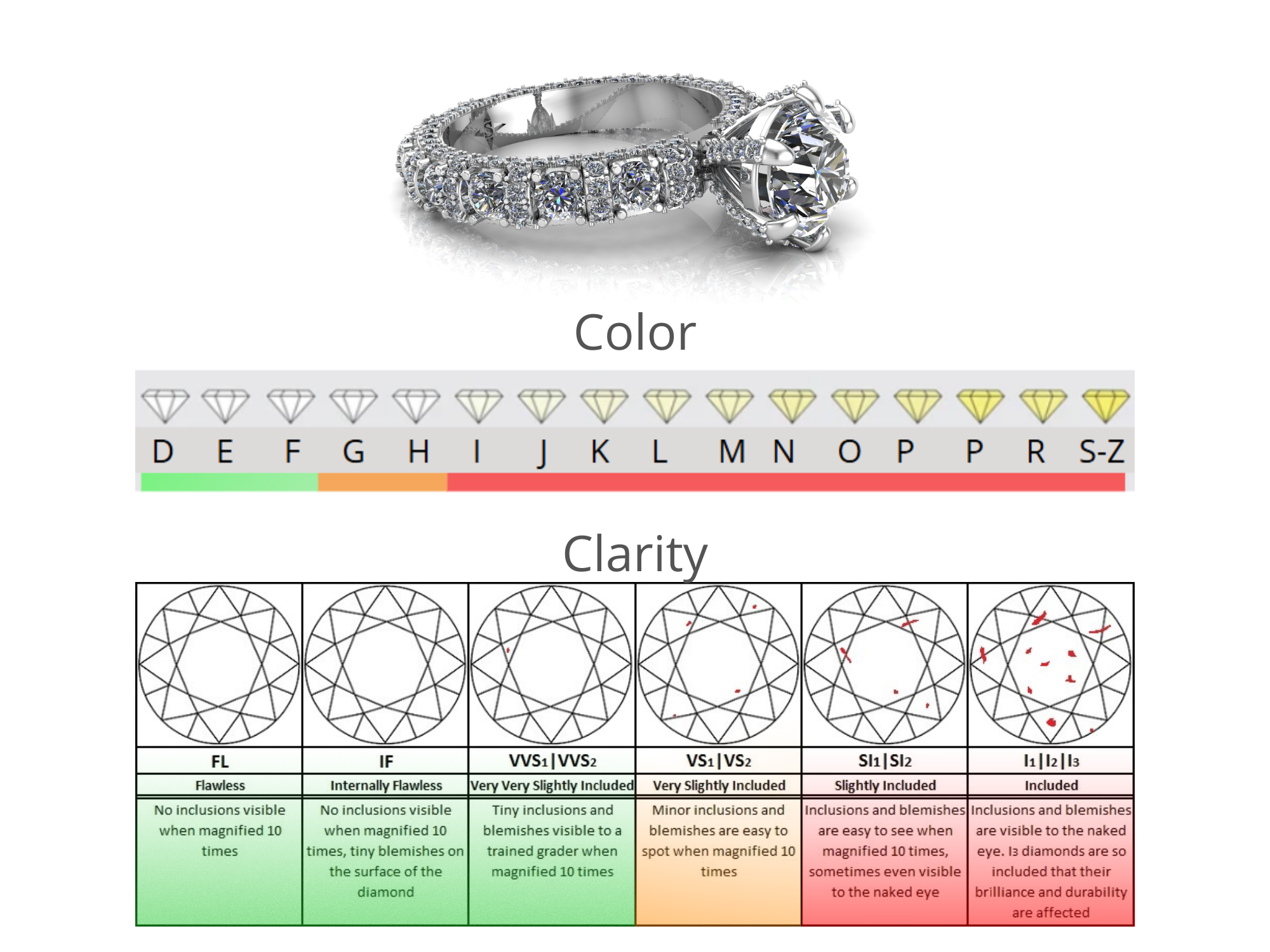
💎 The 4Cs of Diamonds: Complete Guide to Cut, Color, Clarity & Carat Weight
When choosing a diamond—for an engagement ring, fine jewelry, or investment—it's essential to understand the 4Cs: Cut, Color, Clarity, and Carat Weight. These four characteristics determine a diamond’s overall beauty, value, and performance. Whether you're buying a natural or lab-grown diamond, mastering the 4Cs ensures you make a confident, informed choice.
✨ 1. Diamond Cut: The Most Critical C for Brilliance
Diamond cut isn’t about shape (like round, oval, or pear), but rather how well a diamond has been faceted and proportioned. A well-cut diamond reflects light internally from one mirror-like facet to another and disperses it through the top of the diamond, creating exceptional sparkle.
Why it Matters: Cut is the primary driver of a diamond's brilliance, fire (rainbow-colored flashes), and scintillation (sparkle when moved). Even a diamond with perfect color and clarity can look dull if poorly cut.
GIA Cut Grades:
| Grade | Description |
|---|---|
| Excellent | Outstanding brilliance, ideal proportions |
| Very Good | Great sparkle, slight variations in cut |
| Good | Decent sparkle, noticeable limitations |
| Fair | Reduced brilliance, imperfect proportions |
| Poor | Dull and lifeless appearance |
Ideal Proportions for Round Cut:
-
Table size: 54–57%
-
Depth: 59–62%
-
Pavilion angle: ~40.6–41°
-
Crown angle: ~34–36°
Tip: Always prioritize Excellent or Ideal cuts, especially in lab-grown diamonds, where precision cutting enhances their already stunning brilliance.
2. Diamond Color: The Whiter, The Brighter
Color in white diamonds is evaluated based on how colorless they appear. The GIA color scale ranges from D (completely colorless) to Z (light yellow or brown tint).
Why it Matters: Color affects a diamond’s purity and visual appeal. Colorless diamonds are rare and highly prized, especially in platinum or white gold settings where warm tints are more noticeable.
GIA Color Scale:
| Grade | Category | Description |
| D–F | Colorless | Brightest and rarest white diamonds |
| G–J | Near Colorless | Slight warmth, great value |
| K–M | Faint Tint | Noticeable color in large diamonds |
| N–Z | Noticeable Tint | Budget-friendly, visible tint |
Tip: For lab diamonds, colorless grades (D–F) are often more affordable than natural diamonds, giving you premium looks without the premium price.
3. Diamond Clarity: Nature’s Fingerprint
Clarity assesses the presence of internal inclusions or surface blemishes, which are natural results of diamond formation.
Why it Matters: While most inclusions aren't visible to the naked eye, fewer and smaller imperfections mean a cleaner, brighter diamond. Clarity also affects light flow and structural integrity.
Clarity Grades:
| Grade | Full Name | Description |
| FL | Flawless | No inclusions or blemishes under 10x magnification |
| IF | Internally Flawless | No internal flaws, extremely rare |
| VVS1/VVS2 | Very Very Slightly Included | Minuscule inclusions, difficult to detect |
| VS1/VS2 | Very Slightly Included | Slight inclusions, usually eye-clean |
| SI1/SI2 | Slightly Included | Noticeable under magnification, possibly visible |
| I1/I2/I3 | Included | Clearly visible flaws, affects brilliance |
Tip: Choose VS1 or VS2 for the best balance of quality and value. Lab diamonds often feature higher clarity due to controlled growing environments.
4. Carat Weight: Size that Shines
Carat refers to the diamond’s weight, not necessarily its size. One carat equals 0.2 grams. Two diamonds of the same carat weight can look very different in size depending on their cut and shape.
Why it Matters: Carat affects visual impact and price. Larger carats are rarer and more expensive, but remember that a great cut can make a smaller diamond appear bigger and more brilliant.
Carat Size Chart (Round Cut):
| Carat | Approx. Diameter | Common Use |
| 0.25 | ~4.1 mm | Delicate and dainty rings |
| 0.50 | ~5.1 mm | Subtle and elegant look |
| 1.00 | ~6.5 mm | Classic solitaire engagement |
| 1.50 | ~7.4 mm | Luxury and bold appearance |
| 2.00 | ~8.2 mm | High-impact, red carpet-ready |
Tip: Don’t fixate on carat weight alone. A 0.90 carat diamond with an Excellent cut may look more brilliant than a poorly cut 1.00 carat diamond.
Lab-Grown Diamonds and the 4Cs
Lab-created diamonds offer exceptional value with fewer inclusions, better color consistency, and precision cutting. This means you can afford:
-
Higher color and clarity grades
-
Bigger carat weights
-
Superior cut quality
They are physically, chemically, and optically identical to mined diamonds but come at a more accessible price and with a lower environmental impact.
Final Recommendations
To choose a diamond that balances beauty, value, and ethics:
-
Prioritize Cut above all for brilliance
-
Select Color in the D–H range for a bright, white appearance
-
Opt for Clarity at VS2 or better for eye-clean quality
-
Choose a Carat size based on personal preference and budget
Want help choosing the perfect diamond? Contact our experts at info@laboratory-diamonds.com and explore our ethically sourced lab-grown diamond collections today!

